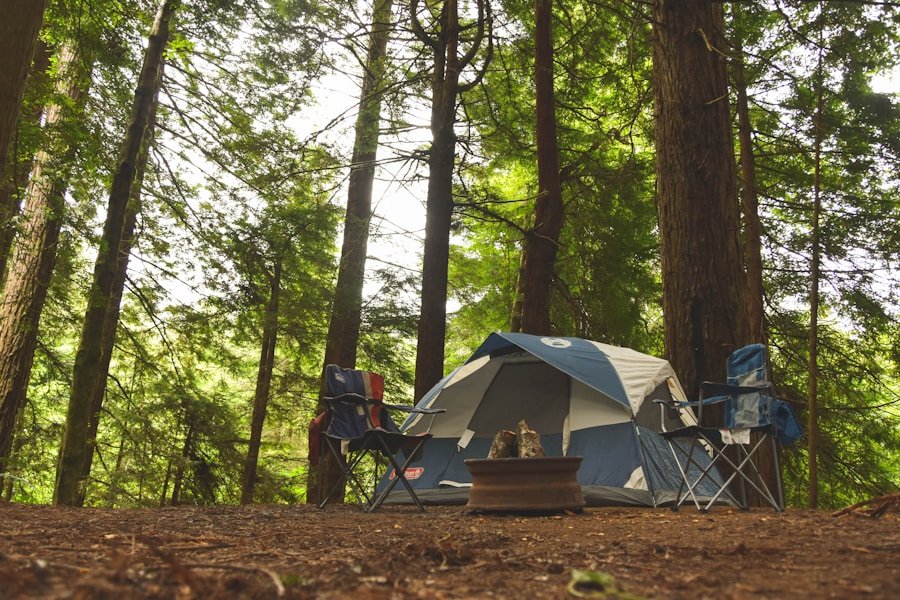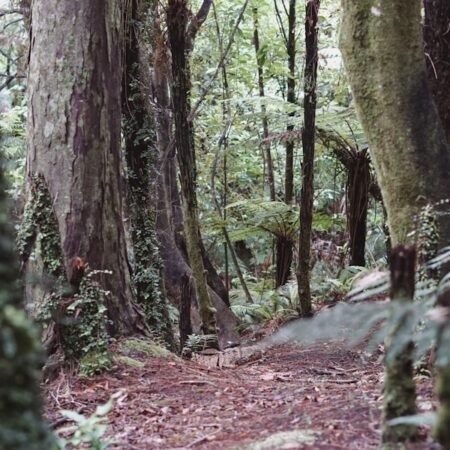When venturing into the wilderness, constructing a reliable shelter is a vital skill that every camper should master. Regardless of whether you’re planning a brief weekend getaway or an extended wilderness expedition, a sturdy shelter is essential for ensuring your safety and comfort. A well-constructed shelter provides a barrier against harsh environmental conditions, including precipitation, strong winds, and extreme temperatures, while also offering a sense of security and seclusion in the great outdoors.
In addition to providing elemental protection, shelter building is a crucial aspect of adhering to Leave No Trace principles. By utilizing natural materials found in the environment to construct a temporary shelter, campers can minimize their ecological footprint and reduce the need to transport heavy and bulky camping equipment. Recognizing the significance of shelter building in camping not only elevates your outdoor experience but also fosters responsible and sustainable camping practices.
Key Takeaways
- Shelter building is crucial for campers as it provides protection from the elements and wildlife.
- Essential tools and materials for building a shelter include a tarp, rope, and a multi-tool.
- Constructing a sturdy shelter involves finding a suitable location, securing the structure, and insulating the interior.
- When choosing a location for your shelter, consider factors such as terrain, wind direction, and proximity to water sources.
- Campers can explore creative and alternative shelter building techniques such as using natural materials or repurposing existing structures.
Essential Tools and Materials for Building a Shelter in the Wilderness
Basic Tools and Materials
These include a sturdy knife or multi-tool for cutting and shaping wood, a length of paracord or rope for securing the shelter, and a tarp or waterproof material to provide additional protection from the elements.
Utilizing Natural Resources
In addition to these basic tools and materials, it is also important to consider the natural resources available in the environment. For example, if you are camping in a forested area, you may be able to use fallen branches and leaves to construct a shelter. On the other hand, if you are camping in a desert or arid environment, you may need to rely on rocks and sand to build a shelter.
Being Prepared for Any Environment
By understanding the essential tools and materials for building a shelter in the wilderness, campers can be better prepared to adapt to different environments and create a comfortable and secure shelter.
Step-by-Step Guide to Constructing a Sturdy Shelter in the Outdoors
Now that you understand the importance of shelter building and have gathered the necessary tools and materials, it’s time to learn how to construct a sturdy shelter in the outdoors. There are several different types of shelters that campers can build, depending on their specific needs and the resources available in the environment. One of the most common types of shelters is the lean-to, which is constructed by leaning branches or poles against a support structure, such as a tree or rock, and covering them with a tarp or other waterproof material.
To construct a lean-to shelter, start by selecting a suitable location with enough space for your shelter and gather long branches or poles to serve as the main support structure. Lean these branches against a sturdy tree or rock at a 45-degree angle, leaving enough space for you to sit or lie down comfortably inside the shelter. Once the main support structure is in place, cover it with a tarp or other waterproof material, securing it with paracord or rope to provide additional protection from the elements.
By following this step-by-step guide to constructing a sturdy shelter in the outdoors, campers can create a comfortable and secure shelter that will enhance their camping experience.
Tips for Choosing the Right Location for Your Shelter
| Chapter | Shelter Type | Materials Needed | Skills Required |
|---|---|---|---|
| 1 | Lean-to Shelter | Tarp, Rope, Branches | Knot tying, Branch selection |
| 2 | Debris Hut | Leaves, Branches, Debris | Insulation, Packing |
| 3 | Bunker Shelter | Dirt, Wood, Tarp | Excavation, Reinforcement |
When it comes to building a shelter in the wilderness, choosing the right location is crucial for your safety and comfort. There are several factors to consider when selecting a location for your shelter, including protection from the elements, proximity to natural resources, and potential hazards in the environment. It is important to choose a location that provides natural protection from wind, rain, and extreme temperatures, such as a grove of trees or a rock outcropping.
In addition to protection from the elements, it is also important to consider the availability of natural resources in the environment. For example, if you plan to build a shelter using branches and leaves, you will need to choose a location with an abundance of these materials. Similarly, if you plan to build a shelter near a water source, be mindful of potential hazards such as flooding or wildlife activity.
By following these tips for choosing the right location for your shelter, campers can ensure that they have a safe and comfortable place to rest and relax during their camping trip.
Creative and Alternative Shelter Building Techniques for Campers
While traditional shelter building techniques such as lean-tos and A-frames are effective for providing protection from the elements, there are also creative and alternative shelter building techniques that campers can explore. For example, one alternative technique is building a debris hut, which involves creating a framework using branches and covering it with leaves and other natural materials for insulation. This type of shelter is particularly useful in cold or wet environments where additional insulation is needed.
Another creative shelter building technique is constructing a snow cave or igloo in snowy or icy environments. By digging into a snowdrift or packing snow into blocks, campers can create a cozy and insulated shelter that provides protection from the cold and wind. These creative and alternative shelter building techniques not only enhance your camping experience but also allow you to adapt to different environments and weather conditions.
Safety Considerations and Precautions When Building a Shelter
Stability and Security
One of the most important safety considerations when building a shelter is ensuring that it is stable and secure, especially in windy or stormy conditions. Be sure to use sturdy branches or poles for the main support structure and secure them firmly to prevent collapse or shifting.
Environmental Hazards
In addition to stability, it is also important to consider potential hazards in the environment when choosing a location for your shelter. Be mindful of potential risks such as falling branches, wildlife activity, or flooding when selecting a site for your shelter.
Regulations and Restrictions
It is also important to be aware of any regulations or restrictions regarding shelter building in the area where you are camping. This includes knowing any local rules or guidelines that may impact your shelter building plans. By prioritizing safety considerations and taking precautions when building a shelter, campers can minimize potential risks and ensure a safe and enjoyable camping experience.
Maintaining and Disassembling Your Shelter: Leave No Trace Principles for Campers
Once you have built your shelter and enjoyed your camping trip, it is important to practice Leave No Trace principles when maintaining and disassembling your shelter. This means leaving the natural environment as you found it and minimizing your impact on the wilderness. When maintaining your shelter, be sure to remove any debris or waste materials and leave the area clean and undisturbed.
When disassembling your shelter, take care to dismantle it carefully and leave any natural materials where you found them. Avoid cutting live vegetation or damaging trees when gathering materials for your shelter, and be sure to pack out any trash or leftover materials. By practicing Leave No Trace principles when maintaining and disassembling your shelter, campers can contribute to preserving the natural beauty of the wilderness for future generations to enjoy.
In conclusion, shelter building is an essential skill for campers that enhances their outdoor experience while promoting responsible and sustainable camping practices. By understanding the importance of shelter building, gathering essential tools and materials, following step-by-step construction guides, choosing suitable locations, exploring alternative techniques, prioritizing safety considerations, and practicing Leave No Trace principles when maintaining and disassembling shelters, campers can create comfortable and secure shelters while minimizing their impact on the environment. Whether you are embarking on a weekend camping trip or an extended wilderness adventure, mastering the art of shelter building will enhance your outdoor experience while fostering a deeper connection with nature.
FAQs
What are the basic principles of shelter building for campers?
The basic principles of shelter building for campers include finding a suitable location, using natural materials such as branches and leaves, and ensuring the shelter is sturdy and weatherproof.
What are some common types of shelters that campers can build?
Common types of shelters that campers can build include lean-tos, A-frame shelters, debris huts, and snow shelters such as igloos or snow caves.
What are some essential tools for building a shelter in the wilderness?
Essential tools for building a shelter in the wilderness include a knife or multi-tool for cutting branches and cordage, a tarp or emergency blanket for added protection, and a saw for cutting larger branches.
What are some safety considerations when building a shelter in the wilderness?
Safety considerations when building a shelter in the wilderness include avoiding areas with potential hazards such as falling branches or unstable ground, ensuring the shelter is well-ventilated to prevent carbon monoxide buildup, and being mindful of wildlife in the area.
What are some tips for making a shelter more comfortable and secure?
Tips for making a shelter more comfortable and secure include adding a layer of insulation such as leaves or pine boughs, creating a raised bed to keep off the ground, and using additional materials such as a ground tarp or plastic sheeting for added protection from the elements.













